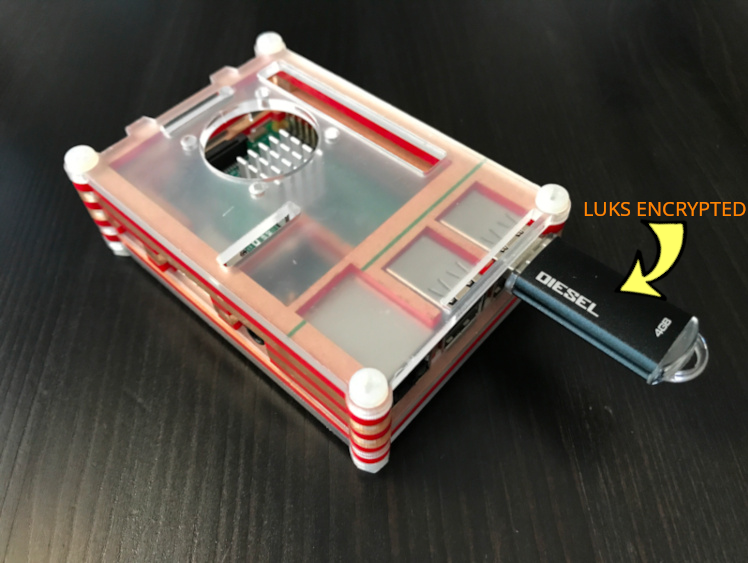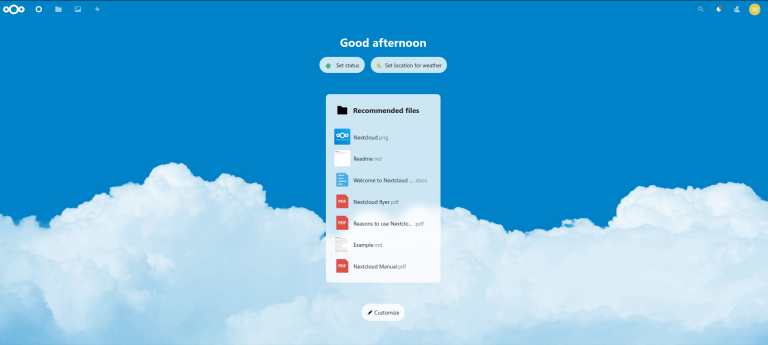LUKS Encrypted Nextcloud Storage + Docker
Setting up a LUKS encrypted external storage device to store Nextcloud data with Docker.
I always encrypt all of my data, however I also like to have that data available to me as conveniently as possible. Nextcloud provides a convenient way to access my data remotely while maintaining the level of protection I am comfortable with. Before we get started it’s important to note that Nextcloud comes equipped with its own server side data encryption, which can be enabled under the “apps” section. I will be forgoing Nextcloud encryption and using LUKS for my external storage device.
I’m not going to be port forwarding my Nextcloud container out to the internet. I will only be able to access it when I VPN into my home network.
Installation
Download and install Docker and Docker-Compose for your OS, I will be using ArchARM.
- Raspbian
1
sudo apt install docker docker-compose
- ArchARM
1
sudo pacman -S docker docker-compose
Create the Required Folders
Create these folders wherever you see fit, I am going to create mine inside of my home directory.
1
mkdir /home/mike/docker/nextcloud/config #Nextcloud configuration files will be stored here
1
mkdir /home/mike/docker/nextcloud/crypt_data #encrypted drive mount point
Partition the Device
First we need to identify the device we wish to encrypt by calling the “lsblk” command.
The device we want is /dev/sda, lets go ahead and create a new partition using fdisk.
Open /dev/sda with fdisk.
1
sudo fdisk /dev/sda
- Type “o” to clear any existing partitions.
- Type “n” and then “p” to begin creating a new primary partition.
- Press “enter” to accept the default primary partition number.
- Press “enter” to accept the default first sector.
- Press “enter” again to accept the default last sector.
- Type “w” to write the changes to the disk and exit fdisk.
Encrypting and Mounting the Partition
Encrypt the new partition using LUKS.
1
sudo cryptsetup -y -v luksFormat /dev/sda1
Follow the prompts and choose a passphrase.
Now we need to mount and format the encrypted partition so we can use it.
1
sudo cryptsetup open /dev/sda1 crypt_data
I named my crypt container “nextcloud_crypt” but you can call it whatever you desire.
Now that the container is open we can format it.
1
sudo mkfs.ext4 /dev/mapper/crypt_data
Lets mount the encrypted partition to the Nextcloud data folder we created earlier
1
sudo mount /dev/mapper/crypt_data docker/nextcloud/crypt_data
Installing Nextcloud with Docker
LinuxServer.io is a great place to get some awesome Docker images, we will be pulling their Nextcloud image from their Docker Hub.
- Navigate to your Docker/nextcloud folder and create a new file, name it docker-compose.yml and paste the following inside.
1
2
3
4
5
6
7
8
9
10
11
12
13
14
15
version: "2.1"
services:
nextcloud:
image: lscr.io/linuxserver/nextcloud:latest
container_name: nextcloud
environment:
- PUID=1000
- PGID=1000
- TZ=America/Pacific #set your timezone
volumes:
- /home/mike/docker/nextcloud/config:/config #your path may differ
- /home/mike/docker/nextcloud/crypt_data:/data #your path may differ
ports:
- 443:443
restart: unless-stopped
- Now run docker-compose.
1
sudo docker-compose up -d
- Verify the container is running.
1
sudo docker ps
- Open a web browser and navigate to https://HostAddress/ and finish the setup.
You can verify that your files are being stored on your encrypted drive by navigating to your encrypted mount point.
1
cd /home/USERNAME/docker/nextcloud/crypt_data/USERNAME/files/
You’ve successfully installed Nextcloud with Docker and have a LUKS encrypted storage folder for all of your files!


